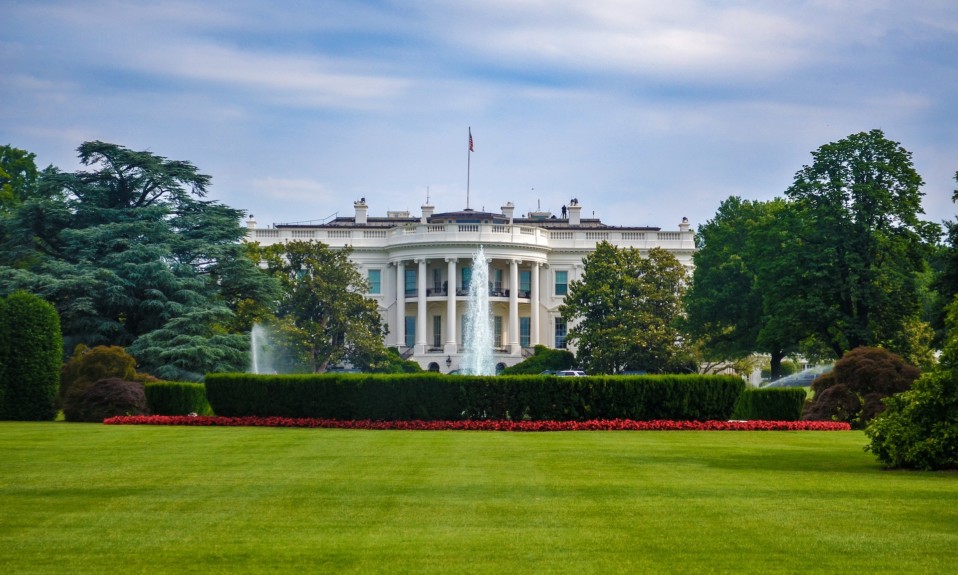At first glance, this rewards-based treatment approach might seem suspect—but it has yielded some promising outcomes
By Mark Mravic
As the COVID-19 pandemic persists and dangerous new variants raise the risk level, state and local governments, healthcare providers and private businesses all have sought ways to boost vaccination numbers and get the country back to normal. There have been tried-and-true strategies—public service announcements, phone-banking, community outreach. But one unusual approach has captured the nation’s attention: vaccine lotteries. The state of California, for instance, has allocated more than $100 million toward incentives for its citizens to get vaccinated, offering rewards ranging from $50 cash cards to a handful of $1.5 million prizes. New York’s grand prize is $5 million. There are also more unusual rewards—free donuts or beer, baseball tickets, cruises, college scholarships, even dinner with a governor. The strategy has been hailed as an innovative way to push people to make the right health decision.
But it’s nothing new to many in the addiction treatment field. In essence, vaccine lotteries are a large-scale form of contingency management (CM), the use of incentives to influence health-related behavior. It’s an approach that has been researched for decades and has been found to be a highly effective evidence-based treatment for addiction and other healthcare issues. Nevertheless, clinical rollout of contingency management in addiction treatment has been limited, for a range of reasons.
What Is Contingency Management?
As the late Nancy M. Petry, Ph.D., of the University of Connecticut, a leading researcher on CM in the past several decades, wrote, contingency management “is a behavioral therapy, based on operant conditioning principles, that provides tangible reinforcers for evidence of behavioral change.” The concept has been around since at least the 1930s and the research of groundbreaking psychologist B.F. Skinner. In studies with animals, Skinner found that behaviors can be shaped by their consequences—that is, they’ll be repeated and strengthened if the consequences are pleasant (reward); will weaken or die out if not reinforced; and will actively decrease in the face of unpleasantness (punishment). The idea seems obvious to any parent who’s promised dessert to a kid if he’ll eat his veggies.
Drugs have a powerful ability to reprogram and then dominate the brain’s reward centers; contingency management aims to reclaim those reward centers by offering positive reinforcers that supplant the drug.”
By the 1950s, behavior modification based on operant conditioning was being used in settings ranging from psychiatric hospitals and prisons to classrooms and workplaces. In the field of treatment for substance use disorders (SUDs), CM was studied in the 1960s as a means of treating alcohol use and smoking. In the ’70s researchers looked at its effectiveness for maintaining methadone treatment. CM gained momentum in the addiction field in the early ’90s when Stephen Higgins, Ph.D., of the University of Vermont developed contingency management interventions for cocaine misuse. More recent research has looked into its application to combat opioid use disorder (OUD), and other studies have shown the effectiveness of contingency management for issues ranging from HIV testing and medication adherence to weight loss, gambling and exercise. Studies find that CM works best in conjunction with other modalities, especially the community reinforcement approach (CRA), which seeks to create positive, abstinence-supporting behavior patterns outside of treatment.
August Holtyn, Ph.D., of Johns Hopkins University, who has been studying CM for years, writes, “Under this behavioral setting, drug use is viewed as operant behavior in which the reinforcing effects of drugs strengthen and maintain their self-administration. … In these instances, the therapeutic goal [of CM] is to bring the behavior under control of alternative behavioral contingencies that selectively reinforce and promote drug abstinence.” In other words, drugs have a powerful ability to reprogram and then dominate the brain’s reward centers; contingency management aims to reclaim those reward centers by offering positive reinforcers that supplant the drug.
As Petry and colleagues noted in a 2017 meta-analysis, contingency management:
- works in treating a variety of substance use disorders, including stimulant , opioid, marijuana, nicotine and polydrug use (studies have found it to be the most effective treatment for cocaine and methamphetamine misuse),
- is effective regardless of patients’ background characteristics, pre-existing conditions or presenting problems, and
- can be applied in virtually any context or setting and alongside any other form of treatment.
How Contingency Management Works
CM can take a variety of forms. The simplest method is cash payment, perhaps in the form of a gift card or rechargeable debit card, for a patient who supplies a drug-free urine sample, begins addiction treatment, attends a therapy session or otherwise engages in behavior commensurate with abstinence. More common are programs using vouchers that can be exchanged for goods or services. Research has shown that such voucher programs are particularly effective when the reward value starts low and rises with each subsequent drug-free urine sample (or other behavior), thereby reinforcing continued abstinence. In addition, a bonus incentive can be offered after a set number of consecutive clean samples. A drug-positive sample, on the other hand, earns no voucher and resets the patient’s schedule back to the beginning. So, for instance, a patient might earn a voucher worth $5 for a first drug-free sample, $10 if the next one is drug-free and $20 for the third in a row (with, perhaps, a $10 bonus). However, if the third sample is drug-positive, the patient receives nothing, and must remain drug-free for the next week before being eligible for another voucher. The idea can similarly work for attendance at therapy sessions, medication adherence or other sought-after behaviors.

In the 2000s, Petry and her UConn colleagues developed a useful modification of the voucher system called prize-based or “fishbowl” contingency management. With this method, rather than earning vouchers of a set or tiered value, patients draw from a bowl that contains a large number of slips of paper, with reinforcers that range in monetary value from zero to, say, $100. For instance, in one program in use today, there are 500 slips in the bowl. Half simply carry a positive message such as “Good job!”, 209 are worth $1, 40 are worth $20 and there is one “jumbo” award worth $100.
Not only does the fishbowl system create a sense of anticipation among patients (akin to a raffle drawing, say), but it has been shown to reduce a program’s overall costs, since “prizes” are often of no or very low monetary value while the promise of the rare jumbo reward still serves as a strong reinforcer. (Many state vaccine lotteries have employed this same strategy, with rewards that can range from low-value cash cards to a lone seven-figure payout.)
At Johns Hopkins, researchers developed an intriguing variation called the “therapeutic workplace,” which provides people battling SUD with education and job-training skills, and then with paid employment within a therapeutic setting—all dependent on drug-negative urine samples. In yet another variation, participants “buy in” to their contingency management therapy by putting in their own money up-front—called a “deposit contract”—and then earning it back by meeting abstinence requirements. A 2015 smoking-cessation study involving 2,500 CVS employees found that in that particular approach, there was very low willingness to join compared to a straightforward reward program.
Implementation of Contingency Management
Despite decades of studies and clinical trials demonstrating the effectiveness of contingency management—not to mention its endorsement by the National Institutes of Health, the Office of the U.S. Surgeon General, the American Society of Addiction Medication and numerous other organizations—real-world applications of the approach remain rare.
[T]here’s a lot of pushback. People don’t like paying people for engaging in health behaviors they think they should be engaging in already.”—August Holtyn, Johns Hopkins University
One reason, unsurprisingly, is a simple moral objection to the idea. “Ahh, yes, there’s a lot of pushback,” Holtyn, who’s currently studying CM applications for buprenorphine adherence, says with a resigned laugh when asked about perceptions of CM. “People don’t like paying people for engaging in health behaviors they think they should be engaging in already.” It’s the same argument about perceived societal permissiveness and misuse of taxpayer dollars that’s levied against harm-reduction programs such as syringe exchanges and safe injection sites, and against medication-assisted treatment (MAT). And as with those modalities, evidence of real-world effectiveness is the best counterargument.
For contingency management, that evidence exists. In 2011, the Department of Veterans Affairs, faced with a disturbing rise in stimulant misuse among military vets, introduced contingency management for use in its outpatient SUD clinics. It’s been the largest rollout of CM in the U.S., treating more than 5,000 patients across more than 100 VA sites in the past decade. The program uses the fishbowl method; patients are rewarded for a drug-free urine sample with a draw from a bowl containing “Good job!” messages and rewards of $1, $20 and $100. The number of draws starts at one for the first negative sample and rises with subsequent negative samples. The coupons can be exchanged for goods at retail stores, cafeterias or coffee shops run by the Veteran Canteen Services, which has donated $100,000 toward funding the program.
Data from the VA shows remarkable success. In a 2018 study of 12-week programs with twice-weekly sessions, patients attended more than half of their scheduled sessions, and 91% of urine samples were drug-free. By comparison, it’s been found that only 42% of veterans in standard outpatient SUD treatment complete more than two sessions of care in a year.
“It’s not a panacea—not all patients respond to contingency management,” Dominick DePhilippis, Ph.D., a clinical psychologist who helped launch the VA program, told The New York Times last year. “But I think of it as a scaffolding. We can’t provide this reinforcement indefinitely, but for a sufficient amount of time that the patient will begin to experience the naturally occurring benefits of recovery.”
Roadblocks to CM
While the VA has provided strong evidence of the effectiveness of contingency management in its SUD programs, other federal agencies such as Medicare and Medicaid that depend on public funds face a significant obstacle: the federal anti-kickback statute (AKS). Under an interpretation of this law, which is meant to prevent fraud and abuse by providers who might otherwise induce patients to use their services, contingency management rewards can be seen as illicit kickbacks. So, even as the U.S. Office of Inspector General (OIG) recognizes contingency management as a legitimate treatment option, it has ruled that CM programs can only be approved on a case-by-case basis. Moreover, the Centers for Medicare and Medicaid Services caps incentives for CM treatments that come under its auspices at $75. And in March 2020, the Substance Abuse and Mental Health Services Administration (SAMHSA) issued guidelines for federal “opioid response” grants that allowed states to develop contingency management strategies, but it limited rewards to a maximum of $15 per contingency and—no surprise—$75 annually per patient.
Such amounts, CM experts say, are far too small to be effective.
Even programs that have approval or don’t rely on federal or state funding must contend with a major hurdle: effective contingency management is complicated, and requires strong training of practitioners.”
In response, and citing the continued precipitous rise in opioid and stimulant overdoses in the U.S., a consortium of 15 healthcare organizations petitioned the OIG in February 2021 for “safe harbor” protection for contingency management treatment. Their letter included a series of recommendations to address concerns over fraud and abuse, including:
- The use of established and validated protocols for the incentives;
- Documentation in the patient’s medical record of an established treatment plan that describes the clinical indication and medical necessity for CM;
- Documentation that the patient “earned” the incentive through objective, verifiable endpoints such as program participation or negative drug tests; and
- No marketing of CM as the primary or sole intervention offered or advertising the value of incentives provided.
But even programs that have approval or don’t rely on federal or state funding must contend with a major hurdle: effective contingency management is complicated, and requires strong training of practitioners. Petry developed rigorous guidelines for clinicians to follow when administering CM, including a nine-point scale that rates practitioners on such factors as how well they keep patients informed of and administer reinforcement, how they manage sessions, and how they display empathy. The guidelines even include suggested scripts for clinicians to follow in directing sessions and communicating with patients.
Studies of the VA program, for which Petry was a consultant, showed that CM worked best when clinicians were well-trained beforehand and consistently coached and assessed during the course of treatment. An unfamiliarity with CM in general and with best clinical practices in particular remains an obstacle to its widespread uptake.
What Happens When the Rewards Stop?
One element that is still in doubt regarding contingency management is its long-term efficacy. While mountains of evidence show that it prolongs abstinence for patients in active treatment, the results from the limited research into what happens after treatment ends have been mixed. What studies there are suggest that, as with other SUD therapies, effects decline when reinforcement stops. Still, as Petry and colleagues noted, “Perhaps most importantly, there are no data to suggest that patients who earlier received CM have poorer long term substance use outcomes than patients who never received CM. All the data indicate that providing CM either results in no significant change or reductions in drug use relative to treatments without CM at long term follow-ups. Thus, decades of research clearly indicate excellent short term benefits of CM, and no or possibly some long term improvements with this treatment.”
So, will CM become a mainstream treatment for addiction? In part, that will depend on public perception, and people’s willingness to accept what at face value seems a weird, even unacceptable idea.”
With that in mind, some proponents argue that CM intervention should be treated like medication for a long-term malady. If addiction is an illness, then just as people who suffer an acute health event might stay on a maintenance med afterward to treat the underlying issue, those with addiction should be able to benefit from the effectiveness of CM without artificial limits to the length of treatment. Proponents say more research is needed into the potential for longer-term CM interventions, post-treatment maintenance models that include incentives, and outreach.
“Unfortunately, addiction is a chronic disease,” Richard Rawson, a longtime CM researcher, told The New York Times, “and treatments need to be designed to accommodate this reality.”
Whether that ever comes about, contingency management proponents see real value in applications with defined short-term goals. For instance, as reported in Nature, at the University of Vermont, Higgins is studying how CM can promote fetal and neonatal health by helping pregnant women quit smoking and stay off drugs. In the program, participants are rewarded for attending educational sessions, taking phone calls from a smoking-cessation coach and undergoing ultrasounds at 30 and 34 weeks, with potential rewards of up to $655. Some participants are also screened for substance use and compensated for drug-free samples with gift cards; the latter group can earn up to an additional $2,400. Preliminary results have shown benefits in terms of fetal size and size at birth. And Higgins has found that extending the rewards after childbirth leads to longer breastfeeding and a lower risk of post-partum depression.
The Future of Contingency Management
The VA’s success with contingency management shows that the approach is effective in large-scale public programs. (The VA has its own budget and hence is not subject to anti-kickback laws.) And while other federal agencies hesitate to approve CM, the state of California—where methamphetamine has overtaken opioids as the leading cause of overdose deaths—may soon become the nation’s biggest provider of contingency management treatment.

On June 1, the California state senate unanimously passed Senate Bill 110, which calls for Medi-Cal—the state’s Medicaid program, serving more than 13 million people—to include contingency management as a covered benefit, similar to other SUD services it provides. The legislation would also require the state to provide CM guidance and training for practitioners. Its author, Sen. Scott Wiener (D–San Francisco), says in the bill, “Because there is currently no form of medication assisted treatment for meth use, CM is a critical tool in addressing meth and other stimulant use. CM is an effective and essential tool in treating MUD, particularly given the lack of other effective medical interventions. We must expand access to it.”
A financial analysis performed in conjunction with the legislation found that including CM in standard SUD services for stimulant misuse would cost the state an additional $179 per patient in treatment—a paltry amount that would likely be offset by CM’s evident benefits.
As for anti-kickback concerns, SB 110 uses an ingenious strategy: It simply spells out, in black and white, that contingency management incentives do not violate the federal anti-kickback statute. “CM services are not a rebate, refund, commission preference, patronage dividend, discount, or any other gratuitous consideration prohibited by existing law,” the bill reads. Whether that’s good enough for the federal Department of Health and Human Services (HHS), which provides a large bulk of Medi-Cal’s funding, remains to be seen. Indeed, that may pose the biggest challenge to the widespread rollout of contingency management in the most populous state in the U.S.
So, will CM become a mainstream treatment for addiction? In part, that will depend on public perception, and people’s willingness to accept what at face value seems a weird, even unacceptable idea. Going back to those vaccine lotteries, John Hopkins’ Holtyn sees promise that such creative approaches to the COVID pandemic could ultimately change people’s perspective on CM. “Those are contingency management interventions that are rolling out in the real world,” she says. “I think the more that we see cases like that working in the real world, the better. So we’re gaining momentum.”
Top photo: Amirali Mirhashemia; second photo from top: Jess Bailey














